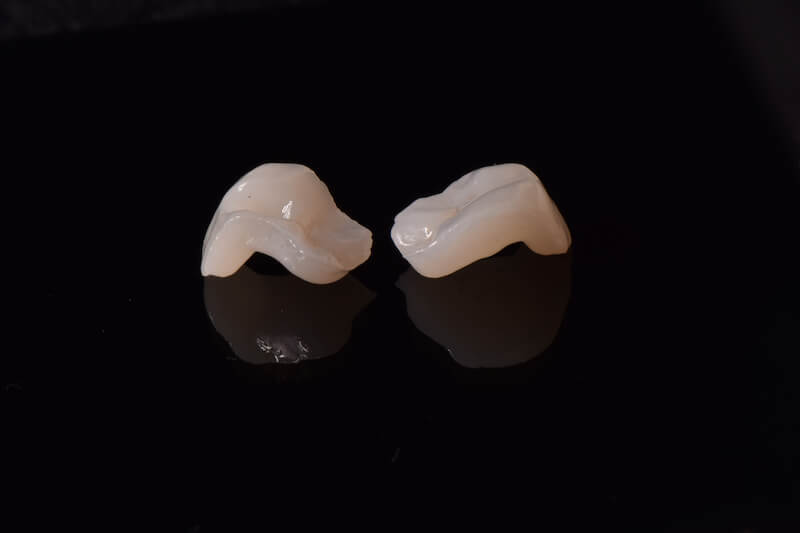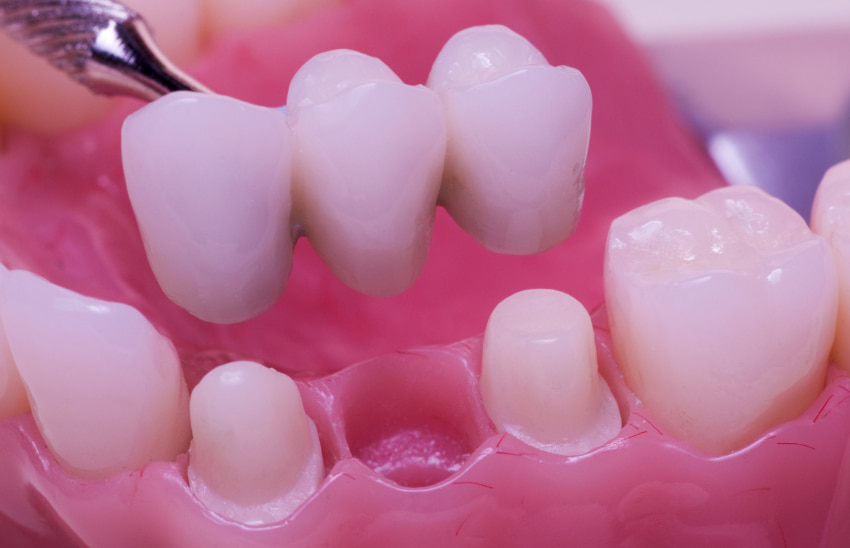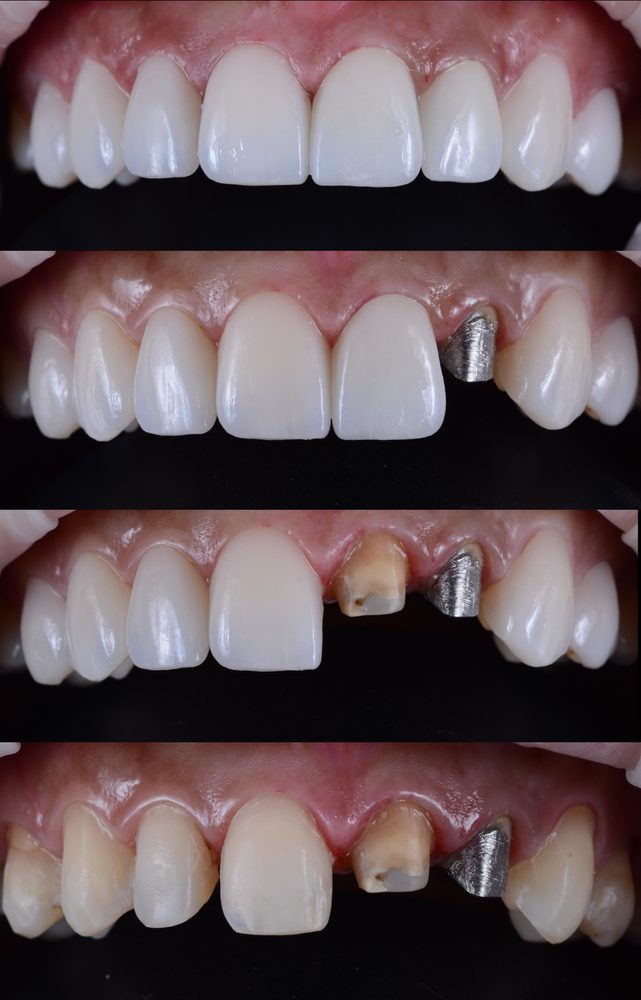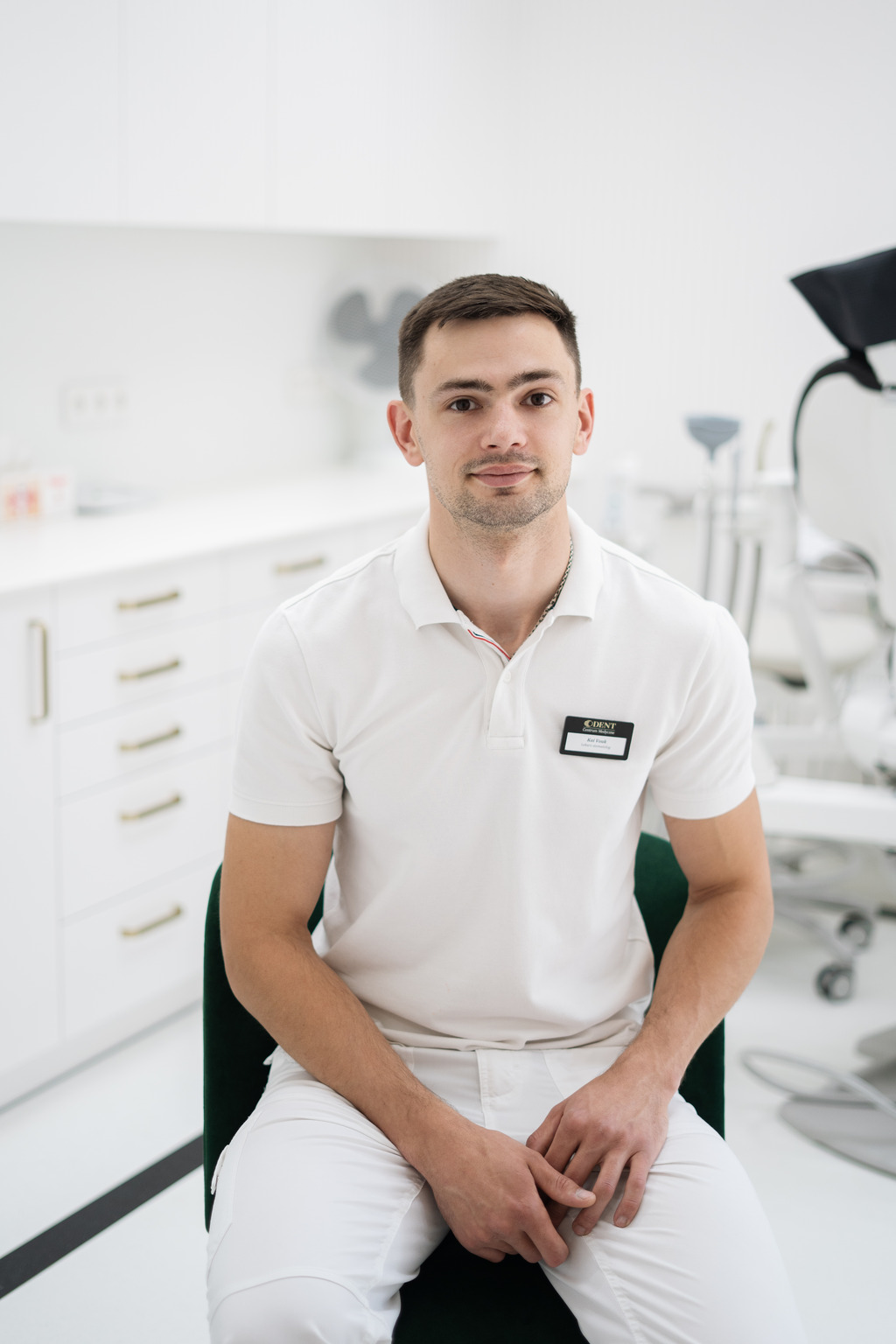Dental prosthetics
Our Medical Center specialises in advanced prosthetic solutions. We restore the correct dentition and occlusion.

Do visit us at ODENT Medical Center, where our highly qualified doctors will help to manage your dental problems and offer comprehensive prosthetic treatment based on the best materials and verified methods.
Prosthetics is a field of dentistry which deals in restoration and rehabilitation of the mastication organ. It can restore the correct dentition and occlusion. Replacement of all missing teeth not only ensures the correct chewing function but also improves the aesthetics and profile of the face.
We provide the highest quality of prosthetic treatment in full scope. Before starting prosthetic treatment, an individual treatment plan is developed, often after consultation with doctors specializing in other fields of dentistry: orthodontics, endodontics, periodontics and maxillofacial surgery.
Trust our specialists
Prosthetic treatment can apply to each of us - it is independent of the patient's age.
If you have:
- chipped or broken tooth,
- gaps between the teeth, diastema,
- incorrect and uneven shape of teeth,
- single teeth missing,
- a complete loss of teeth,
Types
of treatment

Permanent prosthetic restorations:
- porcelain and zirconia crowns,
- bridgework,
- post and core with a prosthetic crown,
- veneers,
- inlay, onlay, overlay,
- implant prosthetics, i.e. implant-supported prosthetic restorations.
Removable prosthetic restorations:
- metal partial dentures,
- acrylic dentures,
- full dentures.
Porcelain crowns
Porcelain crowns are recommended in the case of extensive damage and numerous fillings in a tooth, where standard fillings would not hold. Porcelain crowns are made entirely of porcelain and ensure the effect of natural looking teeth. This is a modern and highly aesthetic prosthetic restoration, providing a very realistic look.
Prior to the decision about making a porcelain crown, the doctor will take an X-ray of the tooth and assess its condition. Often, the root canal therapy and a post and core is necessary. After the tooth has been cleaned thoroughly, healed and ground down, the dentist will take an impression for a porcelain crown to be made in the prosthetics lab. For the time of making a porcelain crown in the lab, the patient will be fitted with a temporary crown imitating a tooth. root canal treatment of a tooth and making a root-canal post. After the tooth has been thoroughly cured and ground, the dentist takes an impression for the porcelain crown, which is made in the prosthetic laboratory.
For the time of making a porcelain crown in the lab, the patient will be fitted with a temporary crown imitating a tooth.
During the next visit, the doctor will remove the temporary crown and, having cleaned the tooth, replace it with a porcelain restoration.
We offer:
- porcelain crowns fused to zirconia,
- porcelain crowns fused to gold,
- porcelain crowns fused to titanium,
- porcelain crowns fused to steel.


Veneers
Porcelain veneer - is a thin dental prosthetic restoration, a porcelain plate, fitted to the anterior surface of the tooth (it looks like a nail plate). A porcelain veneer is 0.5mm – 0.7mm thick. Veneers are made for aesthetic reasons, e.g. to lengthen, shorten or widen the crown or to provide a natural look in the event of discoloured or dead teeth.
We offer:
- ceramic veneers,
- composite veneers.
When are porcelain veneers used?
- If you wish to close slight interdental gaps.
- If you wish to change the shape of the tooth.
- If you wish to improve the look of a discoloured tooth.
- If you wish to align crowded teeth.
Porcelain inlay and onlay
Porcelain inlay and onlay - porcelain fillings which ideally restore the anatomical shape of the tooth. Inlay and onlay fillings provide a great aesthetic effect and are much more durable than traditional fillings. The doctor will remove the decay from inside of the tooth and take an impression of the cavity which will be used in the prosthetics lab for microscope-assisted production of a porcelain onlay/inlay filling. For the time of producing an onlay/inlay filling in the lab, the doctor will close your tooth with a temporary filling, then, at the second visit, he or she will remove it and attach the porcelain filling.


Prosthetic bridgework
Prosthetic bridgework - prosthetic restoration fixed permanently to the natural teeth of the patient. Prosthetic bridges are used when the number of missing teeth is low.
We offer:
- porcelain prosthetic bridgework fused to metal or all-porcelain
- composite prosthetic bridgework
Post and core
Post and core - can be used in a tooth after root canal therapy. Based on the impression of the root canal, the prosthetics lab makes a post and core. Once the post and core has been cemented in the root canal, the doctor attaches the tooth restoration.
We offer:
- golden post and core,
- steel post and core,
- fiberglass post and core.


Dentures
Dentures – removable prosthetic restorations used in patients with substantial tooth loss. Dentures often restore some or all of the teeth in the maxilla or mandible. They are supported in the mouth by adhesion to soft tissues (e.g. soft palate).
We offer:
- tissue-borne dentures
- complete dentures
- metal partial dentures – dentures for partially edentulous patients.
- missing teeth on metal structures
Benefits
prosthetic therapy:
Frequently asked questions
FAQ
1. What are the stages of making dentures?
The making of dentures requires the patient to pay several visits to the dental surgery during which the dentist will have to do the following procedures:
- take impressions,
- establish the occlusion height,
- fit the waxed trial dentures,
- insert the dentures.
2. Is it possible to save a broken tooth?
Yes, of course. It is best to keep the broken tooth fragment (put it in the saline or just keep it in your mouth in the saliva) as it may be possible to re-implant it (if a whole tooth has been knocked out) or glue the chipped fragment back. If those options will not be possible, the doctor will propose a prosthetic restoration, e.g. a prosthetic crown.
3. What is the difference between a porcelain crown and a composite crown?
Porcelain crown ensures an excellent aesthetic effect: it is smooth, durable, shiny and looks like a natural tooth. Porcelain crowns may be porcelain fused to metal (gold, titanium, steel) or all-porcelain. They are very durable.
Composite crown is made of composite, i.e. material used to make fillings. Composite crowns are constructed in a prosthetics lab and they are usually treated as a temporary restoration and worn until the porcelain crowns are ready.
4. How can I get rid of a diastema?
Diastema is the gap between the central incisal teeth. The diastema can be closed in two ways. The first - orthodontic treatment, the other - shape correction teeth (so-called ones) with composite material or veneers. For an accurate assessment of a given case, we invite you to a dental consultation at the ODENT Centre for Orthodontics and Implantology in Warsaw's Wola district, where the dentist will suggest the best solution.
Our doctors

Once you have completed the form, we will respond within 60 minutes during clinic hours.
-
Opening hours
Mon-Fri: 8:00 - 21:00
Saturday: 8:00 - 15:00
-
st. Grzybowska 85
00-844 Warsaw








